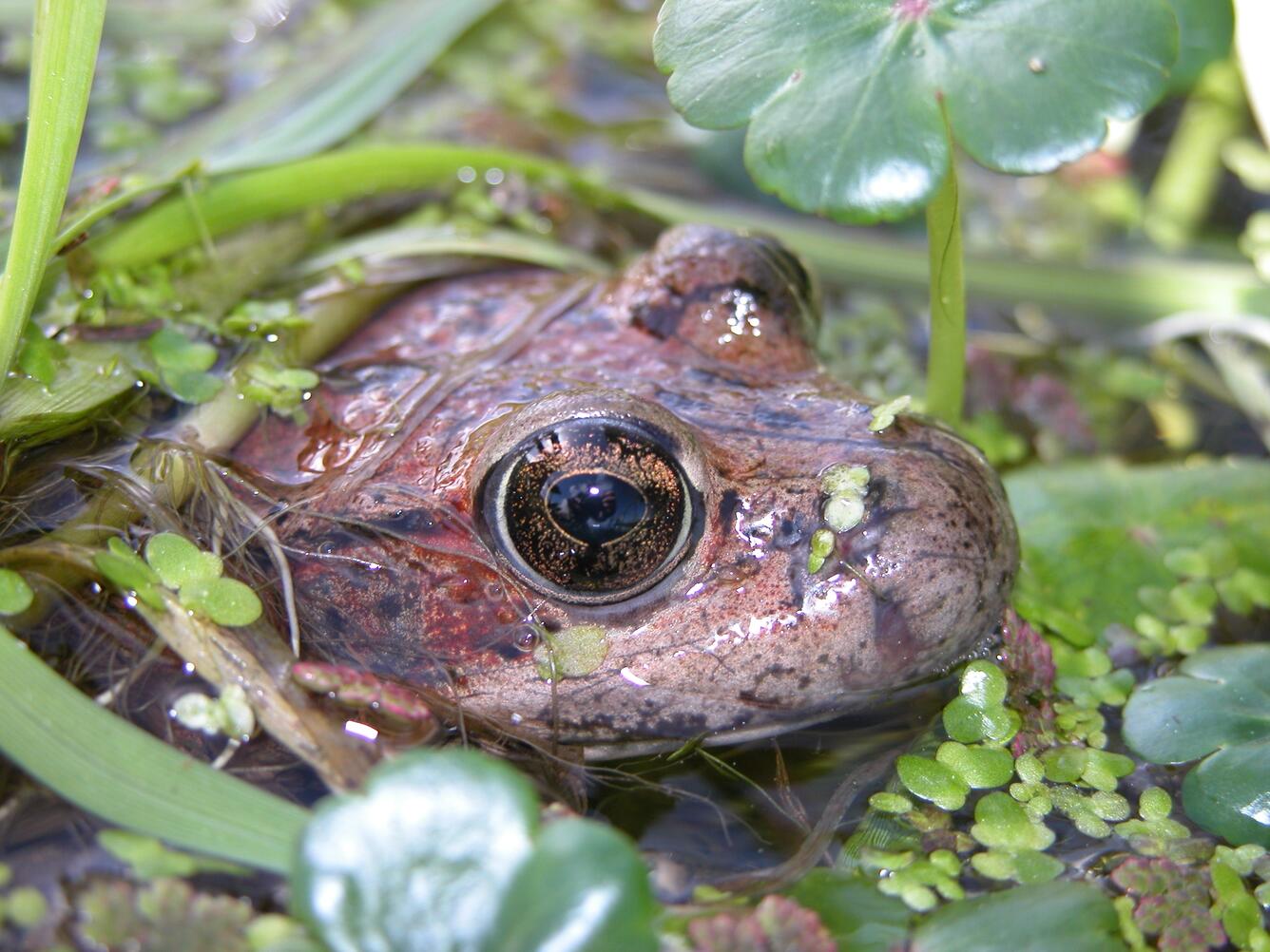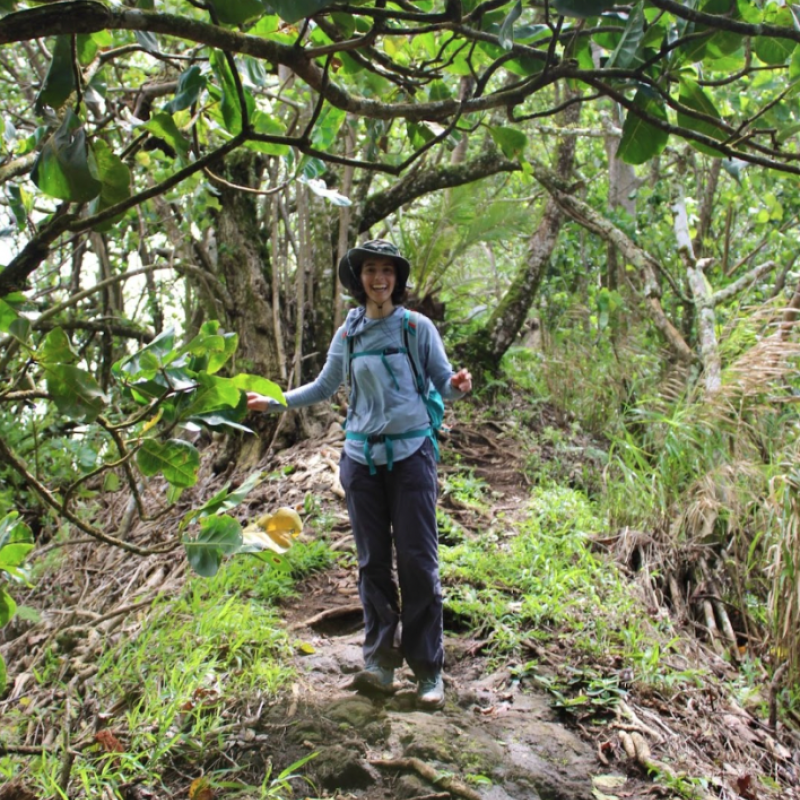Diving into the Data Science Behind California Red-legged Frog Populations
By: Cho R. Adolfo

The California red-legged Frog (Rana draytonii) is currently captivating the minds of scientists and ecologists from the West Coast. With the abundance of this slippery species a fraction of what it used to be, R. draytonii is currently under surveillance within California’s Golden Gate National Recreation Area (GGNRA), a unit of the National Park Service system. Prior to current environmental disturbances which influence habitat loss and population decline, one could find these amphibians downwards from Marin into northwest Mexico. However, today their southern limit does not exceed San Luis Obispo. Current CA-CESU student assistants at UC Berkeley are working to understand the specific environmental variables which influence R. draytonii populations in the GGNRA.
“In order to get a sense [of their populations], we know that the females will lay one egg mass per year”, shares data science intern Danielle Lavitt. “They use the egg masses as a one-to-one ratio to estimate the frog populations” she explains. Thus, each egg mass detected represents a single breeding, female frog in the population that year.
Lavitt is one of three undergraduate data science assistants who have begun to parse through large data sets collected by Aquatic Ecologis Darren Fong and Environment for the Americas’ Intern, Ruby Sainz Armendariz over the past few decades.

[image caption]
“It's a very long data set”, says data science assistant Mark Sun. One which illuminates the complexity of wildlife surveys. As Sun describes, “[There is] really huge effort in collecting [data]”. With 35 field sites and entries dating back to 1997, the uniqueness of this project presents these student scientists with an opportunity to dive into what fellow assistant Robin Hinks describes as a “real world data set”.
It is a change from their expected roles as students in the classroom. Instead of clean and conceptualized data analysis practice, they are now full steam ahead into the real trials and tribulations of field data.
“We are trying to tell something from the massive data set…how do populations change temporally and spatially?” asks Sun. “Amphibians are the most sensitive to climate change as they live on both land and water” he continues.
As this project proceeds in an era of unforeseen climate change, it is interesting to understand the nuance to which these student assistants are parsing through this large project–with the support of CESU advisor Ben Becker. Many factors contribute to how and why environmental sensitivity and complexity is important for analysis.
As long time reptile and amphibian enthusiast Robin Hinks explains, there are several site conditions that this team focuses on such as rainfall, pond size, etc. Lavitt goes on to describe that canopy cover, pool depth, and riparian vegetation can gauge additional insight. “If we can see what variables influence the number of frogs, a goal is finding out what we can do to protect them”, Hinks proclaims.
“I am passionate about conservation” he says, “that's why I do this job”.
Listed as threatened in 1996 under the Endangered Species Act, attention on California red-legged Frogs has become increasingly important. In 2002 the U.S. Fish and Wildlife Service produced a recovery plan for R. draytonii aimed to mitigate population threats. According to the complex work done by collaborators across recent decades, it is an all hands on deck situation.
As Sun describes, “Environmental changes are affecting wildlife ecology and populations”.
Like Hinks, Sun has a love and passion for wildlife that began at a young age–complemented by an affinity for nature documentaries and a prideful collection of live animals. Everything from giant scorpions to centipedes scattered his childhood home with only slight protest and concern from his parents.
Intentionality is paramount in this field of work, and there is much joy to be seen through UC Berkeley’s undergraduates as they connect their passions to their jobs. Creating structural population analysis through R. draytonii egg masses allow Sun and Hinks to fulfill their childhood wonders. Yet, not all individuals are approaching this work with the same fascination for herpetology.

[image caption]
[image caption]
Contextualizing the importance of this research Lavitt explains that “the public eye will see this species as more important if they know that they are threatened”. Her work as an upcoming ecologist highlights how one can approach species conservation from many perspectives.
On her way into a career in forestry and agroecology, Lavitt engages in this work with an intention to apply her work into large scale takeaways. “I am still learning about frogs” she says. In hope to use these data science skills in future ecosystem research, Lavitt and her fellow student data scientists are intricately assessing over 26 years of population and habitat information. As she shares, “It is cool to start to understand the trends and challenges of learning about population surveys”.
All three data science interns hope that citizens can gain deeper understanding into the long-term fluctuations of California red-legged frog populations with the hope that this knowledge will further the conservation and appreciation of California’s indigenous ecosystems. We wait patiently with excitement to see what results this project will procure.
